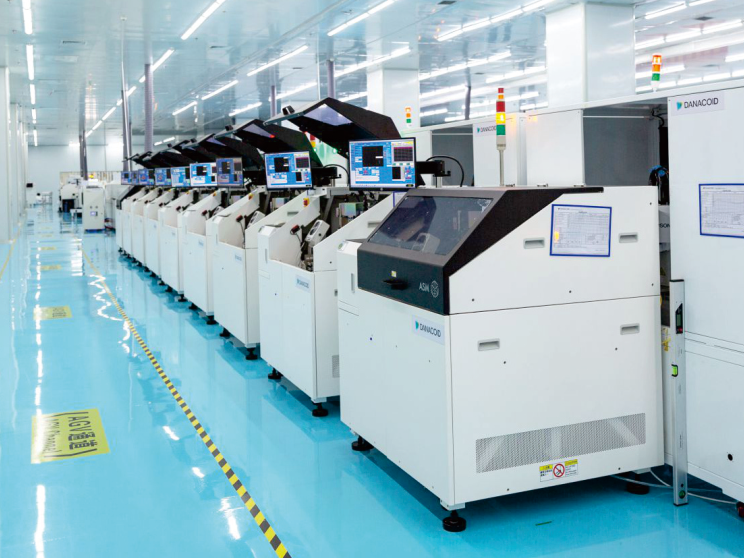Introduction to High-Quality Audio in Live Broadcasts
High-quality audio is crucial for engaging audiences and communicating effectively during live broadcasts. Inadequate audio quality can lead to significant viewer drop-off, as studies indicate that up to 50% of viewers may leave if the sound does not meet their expectations. Ensuring clear, high-quality audio is therefore essential not just for retaining viewership but also for delivering your message accurately and engagingly.
Poor audio, manifesting as muffled sounds or inconsistent volume levels, can severely detract from the viewing experience, often driving viewers away. By investing in high-quality audio equipment and implementing effective sound management strategies, broadcasters can improve sound clarity and reduce unwanted noise, thereby maintaining viewer interest. Understanding and meeting audience expectations for sound quality are vital steps in planning and executing successful live broadcasts.
Additionally, setting expectations about audio quality helps broadcasters tailor their technical setups to audience preferences. Employing technology that enhances sound quality, while managing background noises effectively, can make a notable difference in how a live broadcast is received. Addressing these challenges not only ensures audience satisfaction but also strengthens the broadcaster’s credibility and engagement metrics over time.
Selecting the Right Equipment
High-Quality Microphones: Types and Uses
Choosing the right microphones is crucial for ensuring high-quality audio in live broadcasts. Different types of microphones, such as dynamic, condenser, and lavalier, serve various purposes based on the broadcasting needs. Dynamic microphones are durable and great for live performances, while condenser microphones are perfect for studio settings due to their sensitivity and wide frequency response. Lavalier microphones offer hands-free convenience, making them ideal for presenters on the move. Using a high-quality microphone can significantly improve clarity and reduce background noise, contributing to a professional sound. Experts recommend selecting a microphone suited for the specific environment; for instance, an omnidirectional microphone is effective for capturing group interviews, whereas a shotgun microphone is preferred for capturing focused audio in noisy settings.
The Role of Audio Interfaces and Mixers
Audio interfaces and mixers play a pivotal role in maintaining excellent sound quality during live broadcasts. An audio interface is essential for converting analog signals from microphones and instruments into digital signals that a computer can process. This ensures that the audio retains its fidelity and clarity. Mixers, on the other hand, allow for the management of multiple audio inputs, the balancing of sound levels, and the addition of effects like equalization and reverb. This control over the audio sources enhances the overall production quality, making it more appealing to the audience. With a variety of models and configurations available, choosing the right mixer or interface should be based on the specific input needs and desired output quality of your live broadcast setup.
Importance of Reliable Cables and Connections
Reliable cables and connections are often overlooked but are crucial to ensuring a seamless audio experience. High-quality cables reduce signal loss and eliminate interference, ensuring clearer audio transmission. There are various common connection types like XLR, TRS, and USB, each varying in reliability and quality. Choosing the right type is essential for compatibility with your audio gear. Regularly checking and maintaining these connections can prevent potential audio issues during live broadcasts, facilitating a smooth broadcasting experience. Ensuring robust connections not only maintains the audio quality but also increases longevity and reliability of the entire setup, thus reducing unexpected technical disruptions during live sessions.
Minimizing Background Noise
Minimizing background noise in a broadcast environment is crucial for ensuring clear audio quality. Common sources of noise include electrical appliances, outdoor traffic, or even ambient echoes. Implementing soundproofing techniques, such as using carpets, curtains, and acoustic panels, can significantly reduce these unwanted sounds. This is supported by data indicating that effective noise reduction can lead to improved audience retention rates, as viewers are less likely to be distracted by disruptive audio elements during a live broadcast.
Reducing Echo with Soundproofing
Reducing echo in an audio setting is essential as echo can significantly affect the clarity of the broadcast. Utilizing sound-absorbing materials, like foam panels, helps mitigate this issue. To effectively minimize echo, it's critical to assess the room's shape and size; different configurations might require specific soundproofing strategies for maximum efficiency. Research has shown that acoustically treated rooms enhance the intelligibility of speech, which is vital for keeping audiences engaged, especially during live events where clear communication is key.
Using Acoustic Treatments for Clarity
Implementing acoustic treatments is a vital step in improving audio clarity by reducing reverberation in a broadcast space. Acoustic panels can significantly enhance sound quality, making speech clearer and enhancing the listening experience. Additionally, utilizing different types of treatments, such as bass traps and diffusers, can create a balanced audio environment, catering to specific acoustical needs. Professional audio engineers often recommend regular assessments of these treatments to adapt to any changes in the environment, ensuring consistent high-quality audio output.
Real-Time Audio Monitoring
Using Headphones for Monitoring
High-quality headphones are essential for accurate audio monitoring during live broadcasts. They allow you to detect any audio issues in real-time, ensuring that the sound quality is maintained throughout the session. A closed-back design is particularly recommended for live environments as it effectively isolates sound, preventing ambient noise from interfering with the audio output. Experts often emphasize the importance of comfortable headphones for extended use, as they can make long broadcast sessions easier on the ears, enhancing focus and performance.
Adjusting Levels to Prevent Clipping
Monitoring audio levels regularly is crucial to preventing clipping, which can severely distort sound and negatively impact the listener experience. Setting appropriate audio levels at the start of your broadcast is essential. Incremental adjustments should be made as necessary to maintain sound clarity. Research indicates that keeping audio levels within optimal ranges greatly enhances overall audio quality, ensuring a professional sound throughout the broadcast.
Ensuring Consistent Audio Levels
Consistent audio levels are vital in maintaining audience engagement during a broadcast. Sudden changes in audio levels can be jarring, leading to a disrupted listener experience. Using compression tools can help achieve a consistent audio output by evening out any disparities in sound levels. Statistical analyses suggest that maintaining consistent audio levels can significantly boost listener satisfaction, as it creates a smooth and enjoyable listening experience. Ensuring broadcast quality through these techniques is essential for building a loyal audience base.
Proper Gain Staging and EQ Adjustments
Proper gain staging is essential for maintaining audio clarity in live broadcasts, ensuring signals are balanced and not prone to distortion. This involves setting the initial gain levels to ensure neither too low nor too high, thereby maintaining the quality of the audio signal. By doing so, broadcasters can prevent unnecessary noise and distortion from entering the audio chain. Applying equalization (EQ) techniques further enhances the broadcast by adjusting specific frequencies to match the desired sound profile of the event. Experts advise testing these gain levels meticulously before going live to avoid surprises and ensure high-quality audio output throughout the broadcast. Gain staging and EQ adjustments are vital aspects of a comprehensive audio setup that can significantly impact the overall sound experience for the audience.
Ensuring Synchronization Between Audio and Video
Synchronizing audio and video streams is crucial for effective viewer engagement and seamless comprehension in live broadcasts. This synchronization ensures that both audio and visual elements align perfectly, preventing any dissonance that might distract or frustrate viewers. One effective method to achieve this is through the use of timecode generators, which synchronize various media elements, especially in complex broadcasting environments. Research highlights that discrepancies between audio and video can substantially affect viewer retention and satisfaction, emphasizing the importance of a meticulous technical setup. Implementing robust synchronization practices not only enhances the broadcast quality but also maintains a professional standard that audiences expect in today’s digital streaming age.
FAQ
What are the key factors to consider for high-quality audio in live broadcasts?
Key factors include choosing the right microphones, using reliable audio interfaces and mixers, ensuring robust connections, minimizing background noise, and implementing soundproofing techniques.
How can I reduce background noise during a live broadcast?
Background noise can be reduced by using soundproofing methods like acoustic panels, carpets, and curtains to block outside noises and by ensuring good microphone placement.
Why is synchronization between audio and video important in live broadcasts?
Synchronization is crucial as it ensures audio and video align perfectly, preventing any viewer distraction or frustration, which can affect engagement and retention.
Table of Contents
- Introduction to High-Quality Audio in Live Broadcasts
- Selecting the Right Equipment
- Minimizing Background Noise
- Reducing Echo with Soundproofing
- Using Acoustic Treatments for Clarity
- Real-Time Audio Monitoring
- Proper Gain Staging and EQ Adjustments
- Ensuring Synchronization Between Audio and Video
- FAQ









